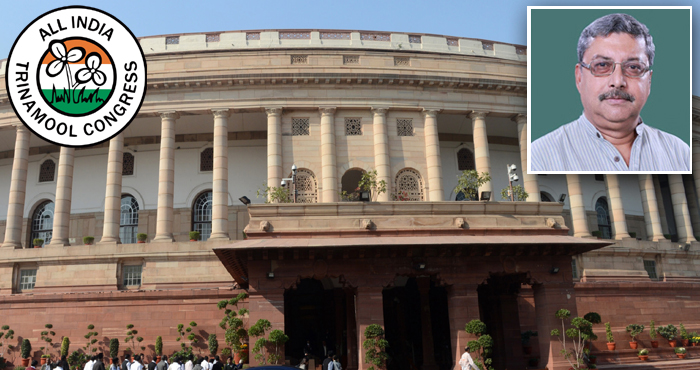July 19, 2017
Kalyan Banerjee speaks during a discussion on the agrarian situation in the country

FULL TRANSCRIPT
Honourable Speaker Madam, I am grateful to you for giving me the chance to speak on the subject. Death of farmers, whether through suicide or other methods, is now a national issue. It has become a daily headline in the media.
The National Policy on agriculture is affecting the inalienable right to life, which includes livelihood of the farmers. India is an agrarian country, with around 70 per cent of its people depending, directly or indirectly, on agriculture. Farmers’ suicides accounts for 11.2 per cent of all suicides in India.
Today, the MP from Congress spoke about certain incidents in Madhya Pradesh. I will give some figures which speak for themselves, about the state of affairs of the farmers of this country. As per the National Crime Records Bureau, the number of suicides by farmers and farm labourers increased to 12,316 in 2013-14.
A study conducted in 2014 found that there are three specific reasons for this:
those who grow cash crops like coffee and cotton;
second, marginal farmers cultivating less than 1 hectare,
and third, those who are having debts.
The study found that in the States in which these three characteristics are most common are also those with the highest number of suicides – almost 75 per cent of the variability in State-level suicides. Farmer suicides increased by 42 per cent between 2014 and 2015. The number of suicides by those in the farming sector increased from 12,316 in 2014 to 12,602 in 2015.
Maharashtra is now at the top of the list: 30,030 deaths – an increase of 18 per cent from 2014. Telangana is second, with 1,358 cases, and Karnataka third, with 1,390 cases. Six States: Maharashtra, Telangana, Andhra Pradesh, Chhattisgarh, Madhya Pradesh and Karnataka saw a more than three-fold rise in farmer suicides in 2015, as compared to 2014 which accounted for 94.1 per cent of total farmer suicides. All these data are from the National Crime Records Bureau.
The States which recorded nil suicides in 2015 include Bihar, Bengal, Goa, Himachal Pradesh, Jammu and Kashmir, Jharkhand, Mizoram, Nagaland and Uttarakhand. Local money lenders are usually portrayed as the villains in India, causing farmer suicides directly. Government data shows that 80 per cent of the farmers killed themselves directly because of bankruptcy and debts after taking loans from banks and registered micro-finance institutions.
Bankruptcy and indebtedness were the single-largest underlying cause of farmer suicides in 2015 with 38.7 per cent of the 8,007 farmer suicides due to those factors. Farming related issues form the second major cause accounting for 19.5 per cent of the cases.
Till April 2016, as many as 160 farmers have committed suicide due to agrarian reasons. As per the data, 57 cases of farmers’ suicide were reported in Maharashtra up to 29 February, 2016. And 56 farmers suicide cases were reported in Punjab as on 11 March 2016.
As per the reports received from various sources 6,867 farmer suicides were from just five states: Madhya Pradesh, Maharashtra, Karnataka, Telangana and Tamil Nadu. This is 55 per cent of the total farmers’ suicides in 2015. 319 deaths were reported from Maharashtra alone in 2017. Surprisingly there are reports of farmer suicides from Kerala, Uttar Pradesh and Gujarat also.
Madam, Mr Scindia already said, and very vividly, about the incident in Mandsaur district of Madhya Pradesh, where at least five farmers were killed and several injured in June 2017, when police fired on protesters demanding better prices in the drought-ridden region that recorded farmers’ suicides every five hours in 2016 and 2017. Data from the National Crime Report Bureau shows that from February 2016 to mid-February this year, at least 1,982 farmers and farm labourers committed suicide in Madhya Pradesh; an average of one suicide every five hours. This is an ill-effect of demonetisation on farmers.
Madam, I was just sharing the data about farmers. But in the last 30-35 years, if there was anybody who fought for the rights for farmers, it was Mamata Banerjee. You have to appreciate it. In 2006, she agitated for farmers’ rights in Singur.
Mamata Banerjee, our leader and the present Chief Minister of Bengal, led the agitation. She went on hunger strike for 26 days. And ultimately, people gave their verdict and in 2011 she came to power. Incidentally Madam, that land acquisition case was challenged in Calcutta High Court in 2006. And it is my great privilege that I argued that matter. But I lost the case in the Calcutta High Court. But in 2016, the Supreme Court has affirmed what Mamata Banerjee had said in 2006. This is the first time in India, Madam, that all the acquired land has been returned back to the farmers; agriculture has been started again there by farmers. And our Chief Minister has taken the lead role in the matter.
So, Mamata Banerjee has been at the forefront of the fight for the rights of the farmers. Democratic fight was there. There was serious criticism at that point of time. But today it has been established, and even the Supreme Court has affirmed that land acquisition was illegal.
Therefore Madam, farmers Rights have to be considered with respect. It is a very sensitive issue and a very emotional issue. Farmers have to be protected. I wish to end with this thought. I do not want to share any more data. That will not resolve the problem of the country. Why are the farmers committing suicide? The reasons have to be dealt with so that no farmer can commit suicide and no farmer is compelled to agitate. And no farmer should be killed by the police during agitation. I’m ending with this thought.
Thank you.
